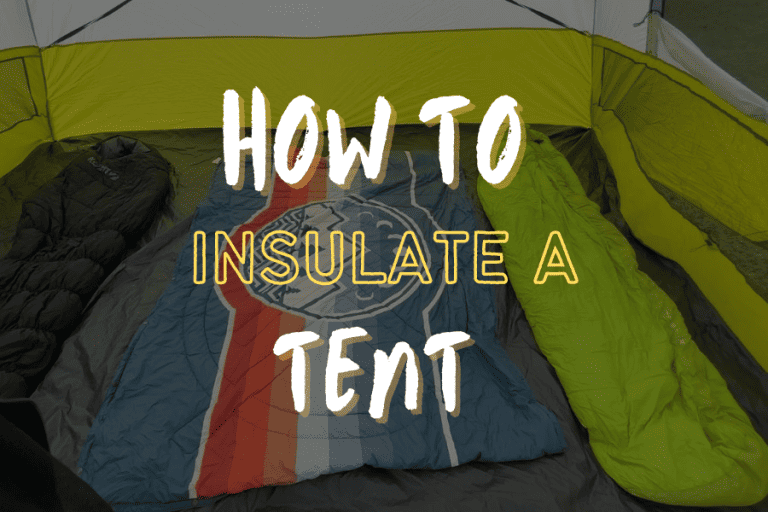I’ve always had a hard time finding a buddy for a winter camping trip. I always receive the same answer – the nights are too cold.
But, that doesn’t have to be the case.
Not if you know how to insulate a tent for winter camping.
In fact, it’s pretty easy, and if you’re wondering how to do it, you’ve come to the right place.
Welcome to winter tent insulation 101. Let’s begin!
How Does Tent Insulation Work?

The science behind insulation is simple – it’s a physical barrier that prevents heat from transferring between two materials.
When it comes to winter camping, tent insulation works by preventing the cold from entering inside. At the same time, it keeps the heat in.
“What heat?” you may ask.
Some campers might opt for a tent heater to keep them warm during winter. But the best heat source is actually the one that’s always available – our own body.
That’s right.
The average adult body, at any given moment, produces energy equivalent to that of a 100 to 120 watt light bulb.
So we have our heat source ready, the only thing that’s left to do is find a way to keep the warmth inside the tent. To do so, we need to use suitable insulation materials.
Density plays a crucial role here. Middle school physics taught us that density is a measure of how compact the mass of a certain object is.
The denser the material, the closer its molecules are. Transferring heat is easier between molecules that are close together. Since air molecules are spread out, they’re lousy at transferring heat. Which is exactly what we want in insulation.
With all this in mind, it’s no wonder that the best insulating material is – air.
Trapping the air inside is the best way of keeping a tent warm. Just think of double-pane windows. Thanks to the air stuck between the two glass panels, they keep the house warm.
Foam is another great insulation material, as it has small air bubbles trapped inside that don’t allow heat to go through.
Another type of insulation worth investing in is the kind that reflects the heat back towards you. Reflective foams and foils are all a good option. These are lightweight and affordable, so there’s no excuse not to get them for your next winter camping trip.
11 Tips For Insulating A Tent For Winter Camping
Now that we covered everything that you need to know about insulation, let’s get straight into how you can stay warm in your tent during winter camping.
Here are a few tips that will help you keep the heat in, and the cold out.
Go With A Suitable Tent
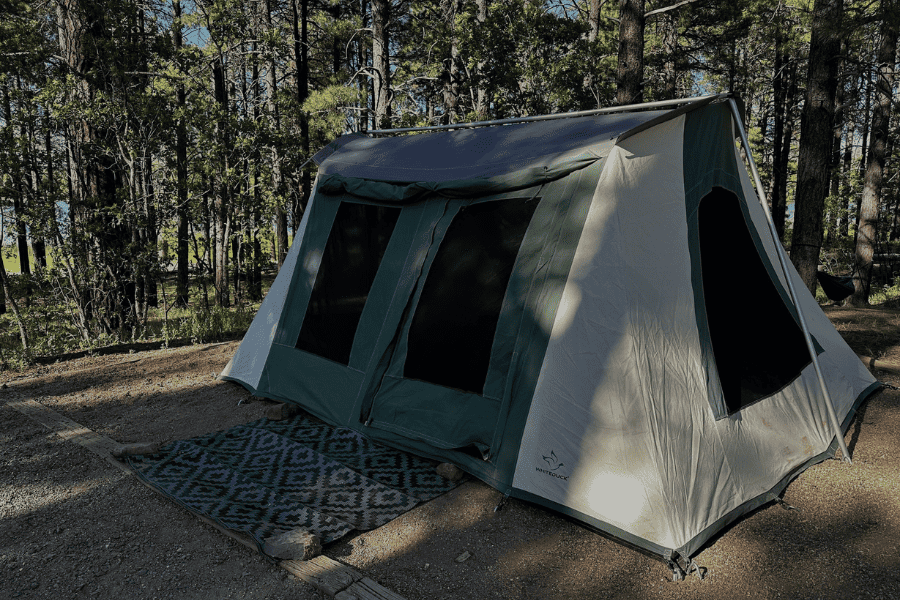
For winter camping, you need to think practically. This is not the time to enjoy the space big tents have to offer.
So leave your 8-person tent at home and take a small tent that’s just big enough to fit you and your camping companion. If you’re camping with a larger group of people, spread out across multiple 1 or 2 person tents.
Why is that?
Because large spaces are more difficult to heat up. If your tent is too big, you’ll need some additional heat sources.
A smaller tent is always warmer. A tight shirt is better than a loose one during winter, right?
The tent fabric also matters. Insulation is a result of trapped air around the fibers of a given material. So, the thicker the fabric, the better insulative value it has.
In this case, canvas takes the lead, as the thickest material. But keep in mind that you need to season it first.
When it comes to synthetic fibers, the answer depends on the weave thickness, but polyester is usually slightly better at insulating than nylon.
Ideally, you want to use a 4 season tent. A 4 season tent is a cold weather tent, designed to keep you protected from harsh weather elements, like heavy snow or high winds.
The name is somewhat misleading though. While they’re great for lots of different weather conditions, these tents are a bit too much for the hottest season of the year.
In any case, a 4 season tent is a better option for winter camping. But that doesn’t mean a 3 season tent can’t work. You’ll just need to combine a few methods to insulate it better.
Also See: Winter Camping Checklist (w/ Printable PDF)
Clear The Ground
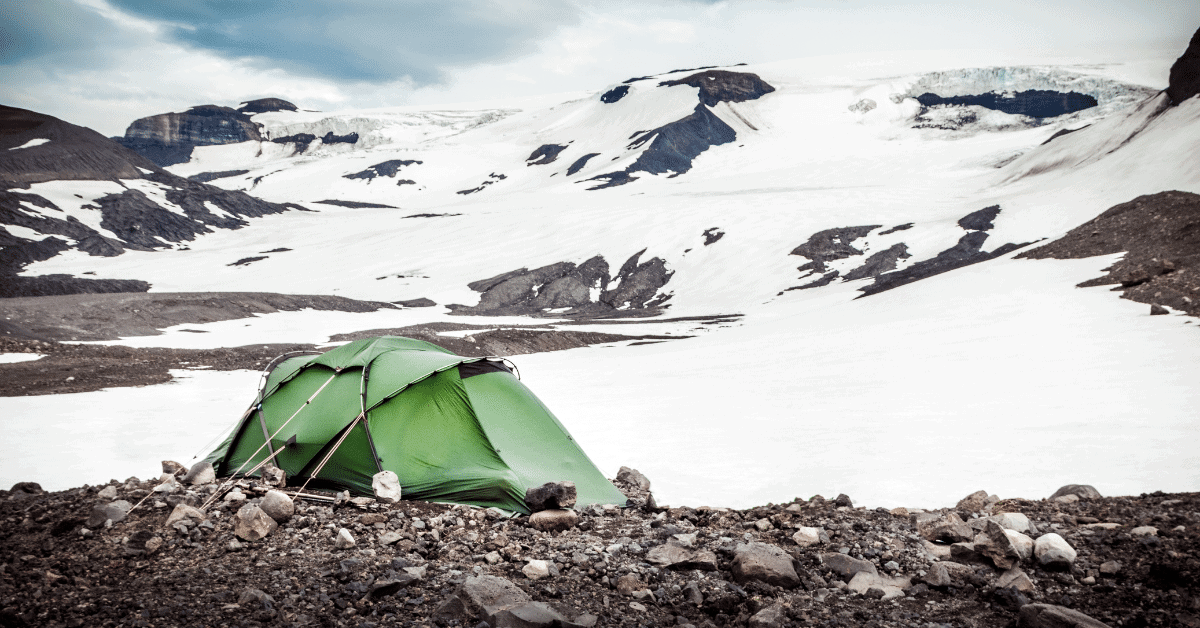
Let’s start with the basics.
In this case, begin by preparing the spot where you plan on pitching your tent.
If there’s snow, you want it gone, trust me.
First, because if it melts during the night, your tent will be sitting on top of a puddle.
And second, if it re-freezes, you’re going to have icy bumps that are all but comfortable to sleep on.
Aside from snow, get rid of all the branches, rocks and anything else pointy. Not only because you don’t want these things to poke you from below, but because they can create an open space that allows the cold air to come in.
Also See: Is It Safe to Eat Snow?
Use Dry Leaves

Dead leaves can prove to be excellent tent floor insulation. When piled up, they trap the air, which works on the same principle as a puffy sleeping bag.
For this method to work, the leaves have to be dry. Otherwise, they’ll bring the moisture in. This means that if there’s snow, this option is out of the question.
Pile them where you plan on pitching your tent, to create a nice and fluffy layer that will keep you warm.
You could also pile dry leaves around the outside of the tent to keep the draft from entering.
Make Use Of A Windbreak
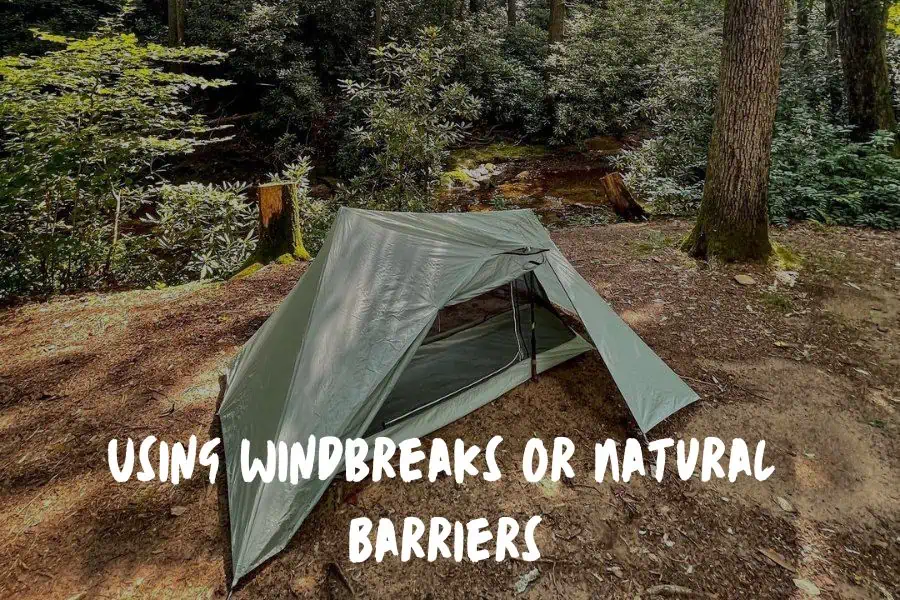
While winter camping, the wind is the last thing you need. Yet, high winds are more common during the colder months, thanks to the higher temperature gradients.
The weather is very likely to be windy during your camping trip, so a windbreak is a must.
The good thing is you have several options.
First, it goes without saying that you should avoid wide open spaces. Find a spot that offers a natural shelter, like between the trees or rocks. But don’t forget to check for possible dead branches, as these might fall off during high winds.
You can use different things in your surroundings to create a windbreak. This includes snow. If your desired camp area is already covered in snow by the time you arrive, you can pile it upwind of the spot where you’re about to pitch your tent.
Snow walls are an excellent line of defense against wind. But to make them, several things have to fall into place.
First, there has to be enough snowfall for you to actually build a wall 2 to 3 feet high.
Besides that, you’re going to need a shovel. But, this should already be on your winter camping essential gear list.
Other options for natural windbreaks include bushes, a fallen tree, a pile of branches or stones, etc.
Finally, a heavy-duty tarp will do the job just as well. Tie it between two trees, at a 45º angle. The angle is important, as it prevents the tarp from ripping during high winds.
Use A Tarp As Floor Insulation
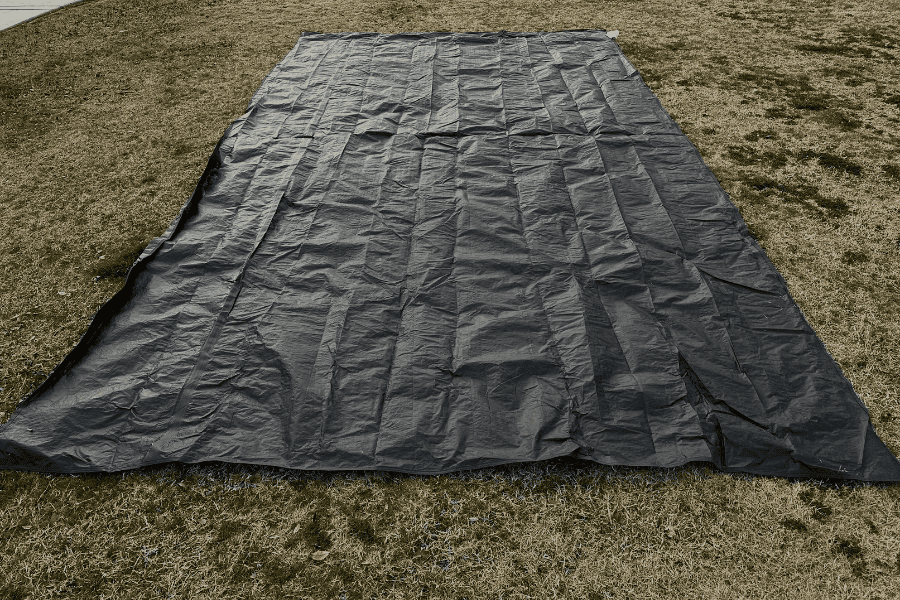
A tarp can also work well as tent floor insulation. It creates a waterproof barrier between your tent and the cold ground, and it’s ideal for snowy locations.
Aside from that, it prevents the warmth inside the tent from getting out.
If you decide on using it, there’s one thing to keep in mind.
The edges of the tarp can extend past the edges of the tent if the weather is dry. The more area around your tent you cover that way, the warmer it will be.
But, if it rains or snows, make sure no edges are sticking out. Otherwise, water will gather on them and slide under the tent. Since we’re trying to stay as warm as possible, a wet tent floor is not an option.
Use A Space Blanket
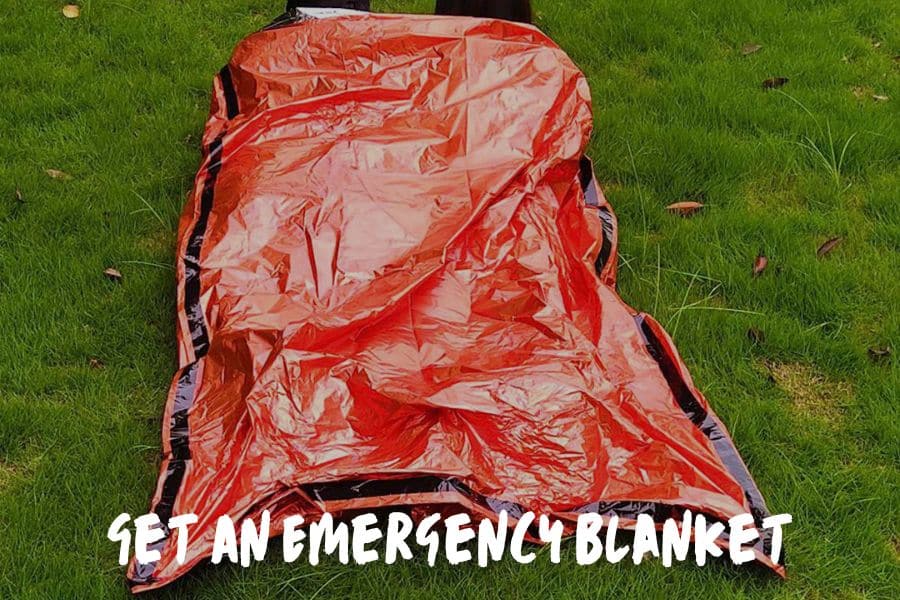
Space blankets, otherwise known as emergency blankets are your best friends when it comes to winter camping.
They can be used in a variety of ways, the best one being lining the inner tent wall with it. That way, they reflect your body heat, instead of letting it exit through the walls.
These blankets are made of a thin sheet of plastic that’s coated with aluminum. They were first developed by NASA for the US space program, so we can rest assured they work amazingly.
In fact, they’re used for first aid too, as they can prevent hypothermia.
Use duct tape to attach emergency blankets to your tent. You can do this just on the walls, but placing one on the floor is even better. It’s unlikely you can get too warm during winter camping.
Bubble Wrapping
Personally, I find popping bubble wrap very satisfying.
And I know I’m not the only one.
In fact, there’s a scientific explanation – our brains produce dopamine when popping bubble wrap. With this in mind, I know it will be hard to refrain from doing that if you’ve got it in the tent.
Here’s the thing, though.
Bubble wrap can be great outside insulation. You can cover your tent with it, and it will work as a thick layer that keeps you safe from the elements.
But there’s a catch.
Aside from not being a breathable material, bubble wrap is bulky. Unless you’re driving really close to your campsite, carrying that roll around with the rest of your camping gear will be difficult.
Don’t Forget the Rain Fly
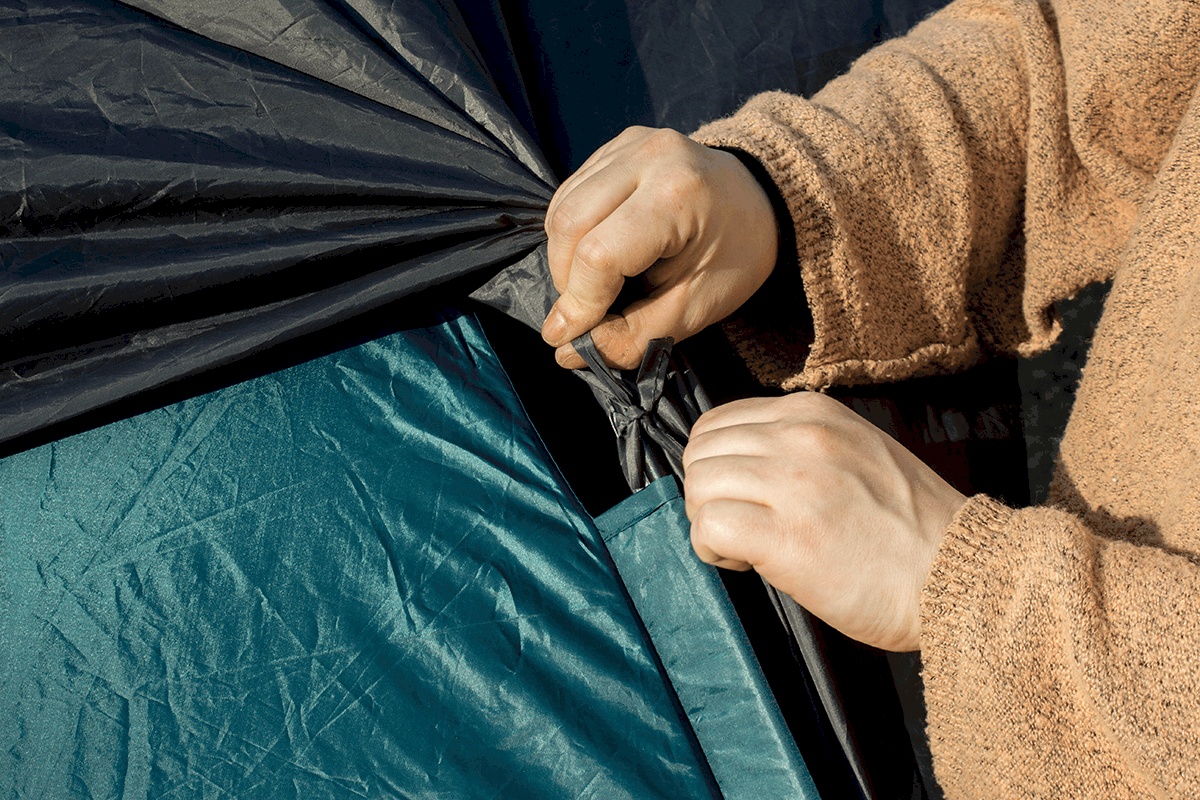
Nowadays, most tents come with a rain fly. In case yours doesn’t, getting one is a necessity.
During winter, the elements are rough, and a rain fly will give you decent protection. Not only will it keep you dry, but it will block the wind, too.
A rain fly works well as insulation. If it goes all the way to the ground, it traps the air between itself and the tent, which is something you should never overlook.
Always test your rain fly before going camping. The last thing you want is to find out it leaks during your trip. Plus, you can easily treat it with a waterproofing spray at home to make it waterproof for the upcoming season.
Use Interlocking Floor Mats

I’ve seen quite a few people opt for interlocking floor mats when winter camping.
Yes, those puzzle tiles kids like to play with.
They lock onto each other, creating a thick layer that doesn’t allow the air to go through.
They’re lightweight, soft and warm.
The only drawback is their size. Depending on the tent, you might not be able to cover the whole floor, so you’ll have to cut them to fit.
Put Heavy-Duty Reflective Foam On The Floor
When it comes to floor insulation, it doesn’t get any better than this.
The foam is filled with trapped air, and thanks to reflective surfaces on both sides, that air is going nowhere.
Once you place it on the ground, the foam doesn’t let the heat get out, nor does it let the cold get in. Presumably, you’re going to use a sleeping pad, so the foam will prevent the heat from your body from getting transferred to the cold ground.
In fact, you can even use it on the sides of the tent. You can easily attach it with duct tape.
Put Down Carpets Or Rugs For Extra Coziness

When winter comes, I always take my carpets and rugs out of storage and place them on the floors. That way, my feet stay warm at all times.
For the same reason, I like to bring a rug on a camping trip in cold temperatures.
Carpets and rugs aren’t magical insulators. But, they can help with staying warm, especially when sleeping on a thin pad.
In case you don’t have a small rug or carpet laying around the house, a thick wool blanket can also do the trick.
What Now?
Now that you know how to insulate a tent for winter camping, I think you’re ready for a winter outdoor adventure.
All of the materials covered in this article are lightweight, which makes them easily portable to a camping site.
Aside from that, there are ways you can use your surroundings to keep the warm air in and cold air out. And when you combine a few of these methods together, you can rest assured your tent will be warm like summer in The Bahamas.
More on Winter Camping:


